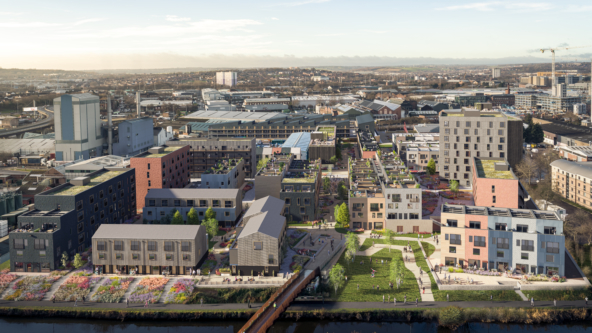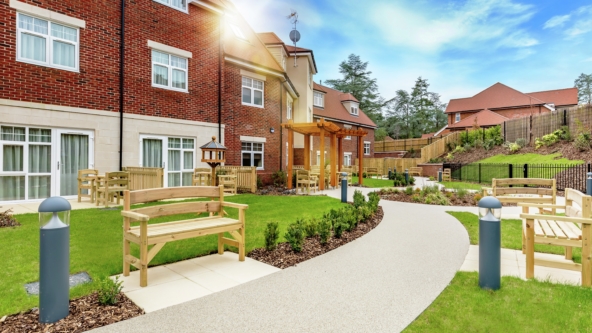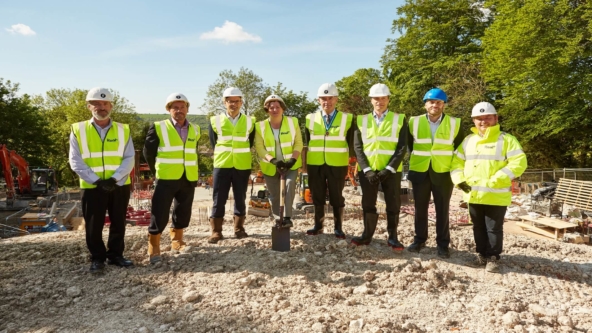Originally featured on Infrastructure Investor
An ageing population coupled with government budgetary constraints provide strong fundamentals. But while infra investors might be better custodians than PE, we find they should do a thorough check-up before diving in.
Our figures show that 2018 was a record year for fundraising, with 2019 on track to set the bar even higher.
All that capital has to be deployed somewhere and with a lack of available assets in many OECD markets, investors have had to become more creative in their definition of what is infrastructure, leading to what have been dubbed core-plus or value-add strategies.
One type of asset that has traditionally sat in this bucket is healthcare. From aged care to acute care facilities, there is a broad range of asset types within the sector. But despite offering several different levels of risk and complexity, there are a limited number of firms active in the space – and certainly fewer than there are investing in infrastructure more broadly.
That wall of capital is changing that, though, with more investors becoming attracted to healthcare, enticed by its demographic fundamentals and its infrastructure characteristics.
How can investors best approach the sector? And what lessons do the sector’s more experienced hands have to offer?
Healthy appetite
There are certainly signs that the sector is proving an attractive one. Recent research conducted by Octopus Healthcare found that institutional investors are planning to allocate $200 billion to health assets in the next five years. Globally, institutional investors that are already invested allocate 6.1 percent of their portfolios to the sector and are looking to increase this by more than half to 9.5 percent by 2023, the research found.For the managers involved in the healthcare sector that Infrastructure Investor spoke to, the message is clear: the demographic fundamentals driving investments in healthcare are solid and here to stay.
One manager sold on the sector is Paris-headquartered InfraVia Capital Partners, which has made two healthcare investments to date, both in Ireland: nursing home provider Carechoice and Mater Private Hospital.
“When we look at an infrastructure asset, we look at the demand and the quality of that demand,” explains partner Bruno Candès. “In healthcare, there is growth fuelled by many things, including an ageing population, and a rising quality of care that is going to continue to increase with no compromise from any generation.
“On the acute care side, there is a shift from fatal disease into chronic disease, which is driving longevity – oncology is a good example of that.”
Couple this with a trend in many countries for governments to reduce their budgetary burden and encourage the private sector to become instrumental in the delivery of health services, and you get what Candès describes as a piece of “critical infrastructure”.
This view is echoed by Julie-Anne Mizzi, partner and global head of social care at AMP Capital. She is responsible for the Australian firm’s Community Infrastructure Fund, an open-ended vehicle which holds several healthcare assets in Australia and the UK, including specialist care provider Regard Group and aged care provider Opal Aged Care.
“We have a very significant ageing population, and we also have an increase in public health intervention, which is driving a lot of individuals who would otherwise have probably died in childbirth or in childhood living well into adulthood. So, health expenditure is growing at around 200 basis points faster than gross domestic product across OECD countries,” she says.
Octopus found that the population of over-85s in the UK alone is expected to grow by 64 percent to 2.6 million between 2017 and 2031, for example.
There’s another good reason that GPs are moving into this space, too: healthcare is a good diversifier.
“The economy can go down but frankly people are going to continue to live longer and our parents and grandparents who are 85 and over need to be taken care of,” Candès says. “That’s why we like the healthcare sector so much. If I’m honest, I would say that it is probably more stable than some kinds of infrastructure assets that are purely GDP-linked.”
Infra or PE?
Some investors, though, have shied away from healthcare precisely because of its difference from ‘traditional’ infrastructure, seeing it as needing more of a private equity-style approach to achieve the required returns.
“This is definitely a core-plus type of asset, but we do see it as very much an infrastructure play rather than a PE play,” Mizzi says.
Healthcare has several characteristics that make it more suited to infrastructure than private equity, she argues, namely: the provision of an essential service; the ability of an investor to maintain strong governance and control through majority or full ownership; stable, robust cashflows (with assets in the UK, for example, receiving as much as 98 percent of their funding from government); freehold property backing that helps mitigate risk; and good scope for organic or inorganic growth.
“When we were first buying Regard, one of the interesting things was that we were up against PE players. We had to say why our approach was going to be different and how it would be successful,” Mizzi recalls.
“Health expenditure is growing at around 200 basis points faster than GDP across OECD countries” Mizzi
“Firstly, we weren’t putting in the extremely aggressive growth profiles that PE players were, which is extremely important because a lot of the time the existing management owns a reasonable part of the company and they want to have growth forecasts that they’re buying into as well.
“The second thing is that we were buying the property [along with the service provision]. That allowed us to take a different debt position to PE players, because we had property backing and security against the debt. So, we ended up with quite good LVR [loan-to-value ratio], and we also got good cost of debt because we weren’t taking an aggressive approach to gearing and we had security with the freehold.”
Candès argues that InfraVia takes a hands-on approach to managing its healthcare assets, closer perhaps to PE than traditional infrastructure, but qualifies that by saying it manages all its assets that way – as, in fact, do many modern infrastructure investors.
“Operating a solar photovoltaic farm, or a single motorway, is less complex from an operational point of view than an acute care hospital, or even trying to build a strong ecosystem around a nursing home portfolio, there’s no question about that,” he says.
One manager we spoke to, who wished to remain anonymous, even went so far as to say that infrastructure investors were the “obvious” owners of healthcare assets, not PE firms.
The traditional PPP-style opportunities seen in the past in places like the UK, with minimal operational risk, doesn’t exist in the Middle East, argues Stephen Vineburg, chief executive of Bahrain-based ASMA Capital Partners.
“Here, you have to provide clinical services as well which does bring more operational aspects into the investment and makes it closer to PE,” he explains.
In addition, Vineburg says, there is a much bigger emphasis on growth in emerging markets.
“In the developed markets, there might be development required but most of the assets will already be built, with a pretty well-established regulatory framework and lots of precedent. In emerging markets, a lot of the assets need to be built – or if they are an existing business, like a healthcare business, they need to grow. So, there’s a big emphasis on managing growth from scratch or from whatever stage it’s at.”
With that increased operational complexity comes one of the biggest concerns that many investors have when it comes to assessing healthcare assets: reputational risk. One anonymous GP that has not invested in healthcare told Infrastructure Investor this was their main reason for hesitancy so far, while Octopus Healthcare chief executive Benjamin Davis acknowledges that the sector is “sensitive”.
“Institutional investors are placing increased importance on ESG criteria and the need for responsible investing. Reputational risk plays a large part in this, with the desire to ensure risk mitigation and the long-term value of an investment,” he says, noting Octopus Healthcare only works with long-term operators and partners when investing in the sector.
This is an approach advocated by all the other investors Infrastructure Investor spoke to. Vineburg says that “reputation is everything” when it comes to these assets, while Candès describes reputational concerns as “risk zero” in the sector.
“In healthcare it is people’s lives that are at risk, so it is very sensitive. I would probably rank it higher risk than other assets,” Candés says. “You have to have the right level of oversight and the right processes in place to make sure you deliver on your obligations. It is absolutely critical that you take a zero-risk approach with no compromise at all.”
AMP Capital’s Mizzi agrees but points out reputational risk is inherent in all infrastructure investment.
“I actually think LPs are fairly comfortable that investing in any infrastructure has reputational risk, whether it’s drones at Gatwick Airport or passenger trains getting derailed, because you’re touching a lot of people’s lives,” she says.
“In health, the key is to demonstrate how we manage and mitigate it. You have to start with a high-quality company and make sure that you’re continuing to improve operational processes so you can be as certain as possible that you’re delivering the right care at the grassroots level.”
In addition, she says, healthcare is really a “people-on-people” business, so having the right culture is important, a point also echoed by both Candès and Vineburg, who argue that, in many ways, the real assets in healthcare are the doctors and nurses who deliver the clinical services.
‘Sector knowledge critical’
It’s clear that those who have already committed to the sector have made their minds up that the fundamentals driving the investment thesis are undeniable and here to stay. But what about those who are still weighing up their options.
The anonymous GP is less sure that revenues will be as stable as our existing investors say they will be. “While there are reasons to believe public funding for this area is unlikely to be cut even in a budget deficit situation, given this funding goes to address the needs of the most vulnerable, it isn’t necessarily obvious why in a situation of scarcity of supply more facilities aren’t created,” they say.
Octopus Healthcare found that 45 percent of investors cited lack of investor skill and resource as the biggest barrier to entry to the sector.
“This is a highly specialised area requiring specialists with unique sector knowledge and large resources to carry out a range of functions,” Davis says. “Having expert help at hand in the form of a specialist manager with a proven track record, who has the origination capabilities, such as an in-house development team, and the capabilities to evaluate the competence of operators is a real advantage for investors when they are trying to crack the sector.”
Mizzi agrees: “I think that sector knowledge is extremely critical to investing here. There are things you need to understand in the ways that the operation of the businesses work, and best practices can be leveraged across assets.”
ASMA Capital’s Vineburg sounds a note of caution, though.
“It’s not like owning a wind farm, that’s for sure. It’s a very technical and demanding business, and it’s not for the faint-hearted,” he says.
“You need to have a good, hard look into your own heart before you get into it.”
Daniel Kemp – 24 Jan 2019







